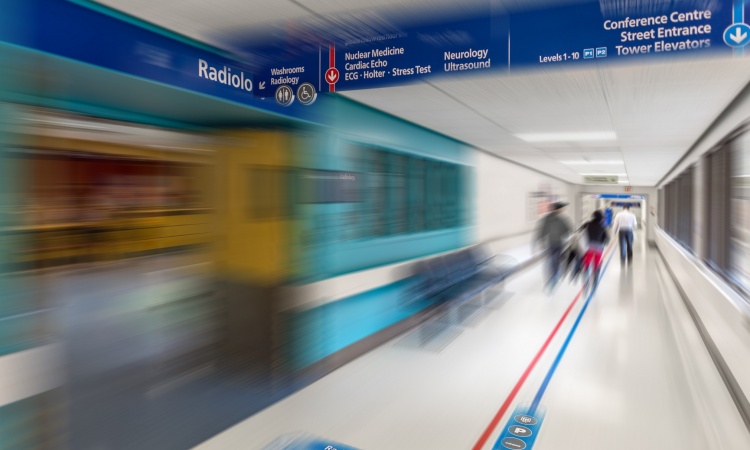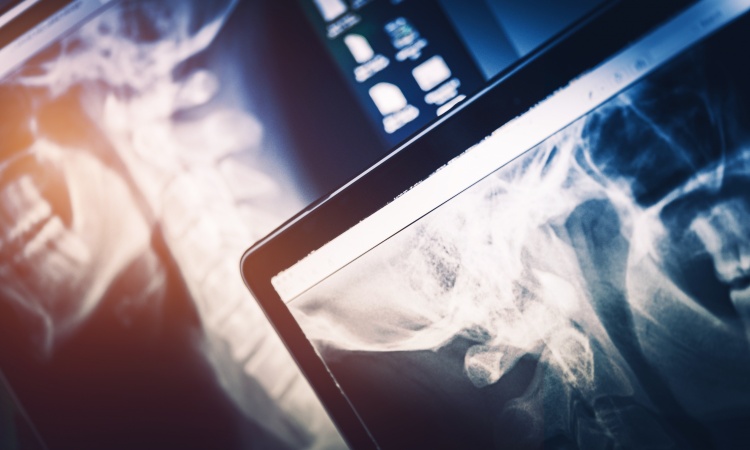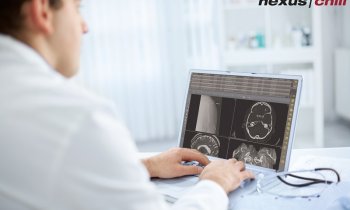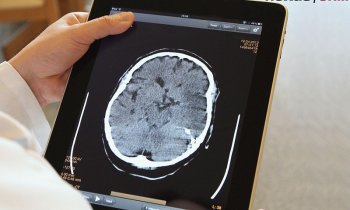Boosting hospital budgets
Interview: Daniela Zimmermann
From 'pyjama' concept to full-dress teleradiology Ten years ago, Professor Maximilian Reiser, of Munich University Hospital, Germany, caused a stir when he presented his (then) futuristic concepts for teleradiology. Today, this valuable service is not only a reality, but also a fairly widespread practice. By providing external radiological support to other hospitals and private practices, Munich University Hospital's teleradiology service also produces internal financial value.

Prof. Reiser: Over the past six years radiology services in our hospital have increased by about 40%; looking after students has become more expensive from the personnel point of view and competitive research requires a ‘critical mass’ of scientifically active colleagues. The money generated from teleradiology will help to cover those costs. Although we have set up the teleradiology service as a separate company, the proceeds will mainly go to our institute and the hospital. The revenues will mostly be used to increase our team. The biggest advantage is that we can keep more colleagues here for further training, who will be able to get to know other areas in this way which are not represented at our two sites (Grosshadern & Inner City).
Who owns the company, and how will it operate?
Initially it was a limited company, but it’s now a small, public limited company, which has entered into contracts with different hospitals, and we can document that the revenue over the years has been invested into infrastructure, servers, data links and peripheral links. For the teleradiology project we have co-operations with partner hospitals, mostly small or medium-sized clinics, and also with specialist radiology practices outside the hospitals.
So you have set up a small network?
It’s not actually that small, because we now also work with the Charité, in Berlin. If a diagnostic centre is overloaded or - extremely rare - if there is a problem with the data link, another diagnostic centre can take over. We normally try to build up and maintain a very close personal relationship with the doctors in the partner clinics and surgeries.
In terms of the business and accounting, who earns the money - Berlin, and then you receive a percentage?
The diagnostic service has a fee per service or within a certain contingent. Whatever is diagnosed at the Charité is reimbursed there and, because it provides the infrastructure, generates the invoices and handles the administration, the public limited company receives a kind of handling charge, which it then retains. Professor Hamm, in Berlin, Professor Claussen in Tübingen, Professor Heller in Kiel and Private Docent Loose, in Nuremberg, are all part of the company. We also have contracts with other registered radiologists.
At the end of the day, any governing body, unless they are thoroughgoing idealists, would like to see a yield of around 15-20%. There is a lot of idealism in our project, almost to the extent of self-exploitation. Over the years, whenever we earned anything we re-invested it into the infrastructure and the hospital to promote research.
This must be a win-win situation for hospital administration?
Absolutely! Not for nothing are the public and political decision makers calling for better co-operation between healthcare providers, to ensure better quality and limitation of costs. Our model, along with those in other teleradiological networks, contributes towards this. It can only be good for the public image of a hospital to be open towards these innovate projects. Moreover, we not only provide an initial diagnostic radiological service but also remain in touch with these clinics regarding various cases. This results in patients being referred to our hospital, because we can provide specialist knowledge not available in other locations. That’s the interesting side effect with our work – the link with other hospitals. It goes without saying that this set-up requires flexibility and fast reaction – otherwise the partner hospitals won’t be happy. What this requires is backup and support from a dynamically thinking and acting hospital administrators with the right perspective.
Does this project take work away from other radiologists, for example those in specialist practices outside hospitals? And, doesn’t your model contribute to the rationalisation of attractive positions for radiologists in hospitals?
Of course I would love to see Head of Radiology positions being created in as many clinics as possible, but that is not what’s happening. To the contrary, more and more hospitals are fighting for survival and simply cannot afford this. At the same time, top quality radiology is an important factor in the hospital popularity ratings. It has not yet been sufficiently acknowledged that radiology plays an increasingly important role in healthcare. However, the number of radiologists has remained the same, which is already leading to significant shortages. Many specialist radiology practices outside hospitals, at least those not based in larger cities, are having problems with recruitment. We work with several of these practices, and help them to overcome shortages arising from staff being away on holiday or due to illnesses. We also offer our diagnostic services at night and over weekends, so our colleagues can occasionally enjoy being off-duty and use this time to recover.
This teleradiological solution is no longer new, is it?
No. I was among the first to start it. As soon as the technology to do it became available, about 10 years ago, I spoke about this at radiological congresses. It created quite a stir and one of your colleagues labelled me a ‘pyjama-radiologist’ - because during my talk I showed some slides which, at first, showed me dressed in a suit and tie sitting in front of my PC monitor at home diagnosing images. Then I let down the blinds, put on a pair of blue and white striped pyjamas, and there were some slides showing me sitting in front of the PC in my pyjamas. The message was: The radiologist is available day and night without taking a long time to arrive. It was quite funny, and a laugh, albeit at my expense, and encouraged me to carry on with this project even more. Meanwhile, this model is not quite so inventive anymore.
Still, the model has to work and obviously does in your case.
Yes. One of our more recent clients is the Max-Planck Institute for Psychiatry, in this case for MR diagnostics! We have been working very closely with some of our partner hospitals for several years. It is important to give teleradiology a ‘face’, which is why our teleradiologists are often on site at the partner hospitals and discuss examinations and diagnoses with doctors there. Still, this does not rule out technical problems, or problems with communication. The only thing then is for us to react very quickly and to build and rely on our mutual trust.
16.11.2006










